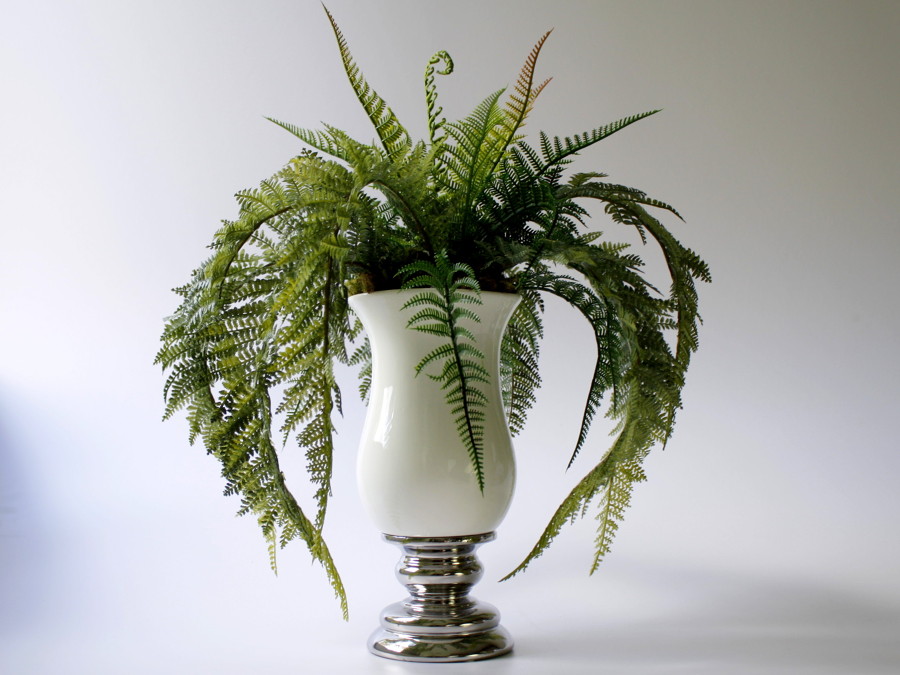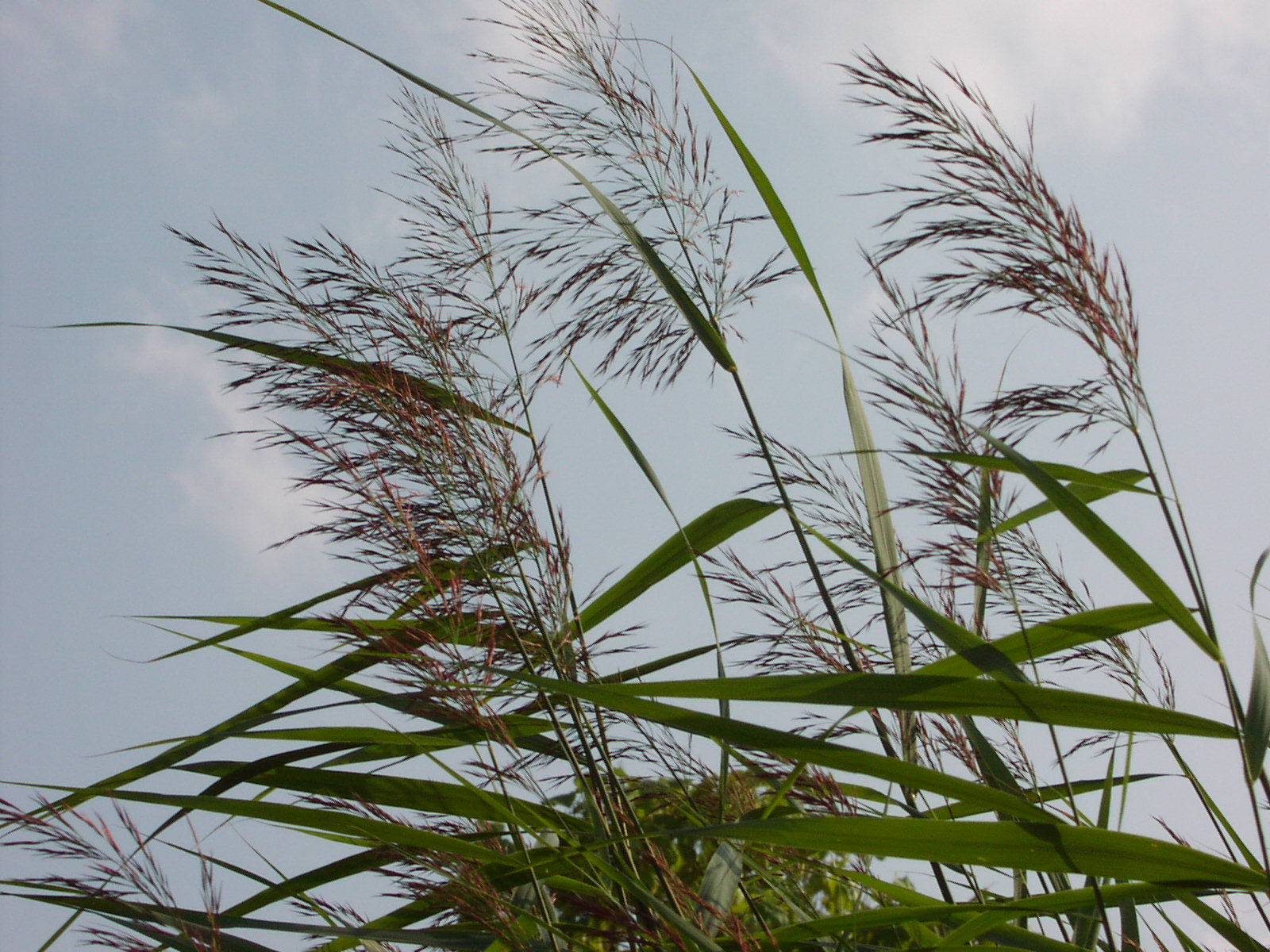Probably, there is no person who does not know what a fern looks like. But there is a variety that has received the name "bracken", unfamiliar to many. It turns out that this bracken fern plant grows in almost all parts of the world. The exceptions are regions where there is constant cold and frost. Even mountains are not an obstacle for him, and he can grow on slopes up to three thousand meters in height.
This plant is known not only for its adaptability to different climatic zones of growth, but also for the use of its greens in cooking and folk medicine. What a lichen looks like a bracken fern photo can be found on the Internet. You can also see it in specialized books, which contain photos of various plant species.
What are ferns
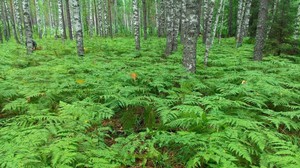 Biologists identify ferns into the whole department, which includes the higher vascular perennial plants. Ferns are unlike other plants in that able to reproduce by spores.
Biologists identify ferns into the whole department, which includes the higher vascular perennial plants. Ferns are unlike other plants in that able to reproduce by spores.
On the back of the fern leaf, brown growths form, in which the spores mature until a certain period. The growths are arranged in such a way that an intricate pattern is formed on the sheet.
Fern to get a continuation of its kind, throws out ripe spores into the surrounding space. If the spore hits a growth-friendly soil, it will germinate, forming a tiny sprout.
The first generation that begins, after germinating from the spore, is called gametophyte. This generation looks like in almost all fern species, like a small heart, consisting of two lobes.
The unusual breeding of the fern is that this miniature process there are germ cells called antheridia and archegonia. When fusion occurs between these cells, the fern grows into the second generation, which is called sporophyte.
The second generation is fully consistent with the idea that everyone is used to remember when the word "fern".
It is this plant that will sow its spores in order to continue breeding ferns on all surfaces where it is possible for such an unpretentious creation of nature.
Indoor fern care at home:https://flowers.bigbadmole.com/en/komnatnye-rasteniya/paporotnik-komnatnyy-raznovidnosti-foto-uhod-v-domashnih-usloviyah.html
Bracken fern
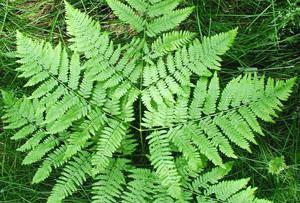 The common bracken fern differs from other ferns in that it likes to grow in woodlands, where it grows better. But this does not exclude its ability to grow elsewhere.
The common bracken fern differs from other ferns in that it likes to grow in woodlands, where it grows better. But this does not exclude its ability to grow elsewhere.
Depending on the area of growth reaches different sizes... For example, in the Transcaucasus, you can find two-meter giants. In central Russia, however, they do not grow up to a meter in height.
Why the common bracken got its name is not reliably known, but there are two theories:
- Triangular leaf shape, reminiscent of an eagle's wing.
- If you cut the root of this fern, the drawing of the vessels vaguely resembles the "coat of arms eagle".
An ordinary bracken grows like this - at a half-meter depth in the ground there is a root, from which leaves grow in a season suitable for germination. New shoots in structure resemble fans of palm trees.
The names of these newly formed stems received "vayami", which in translation from the Greek language describes their external data and literally means a palm branch.
Such shoots are found not only in this variety of ferns, so you should not attribute the plant seen to the common bracken on this basis. It is better to consider what the bracken looks like in the photo, of which you can find many on the Internet.
In the spring, a stem appears from the ground, which at the top coiled as a snail... His name is "rakhis", which is translated from Greek as ridge. This characteristic young shoot also grows in other ferns.
Ferns, hosts, anemones and other shade-loving plants:https://flowers.bigbadmole.com/en/sadovye-rasteniya/tenelyubivye-mnogoletnie-i-odnoletnie-cvety-v-sadu-cvetuschie-vse-leto.html
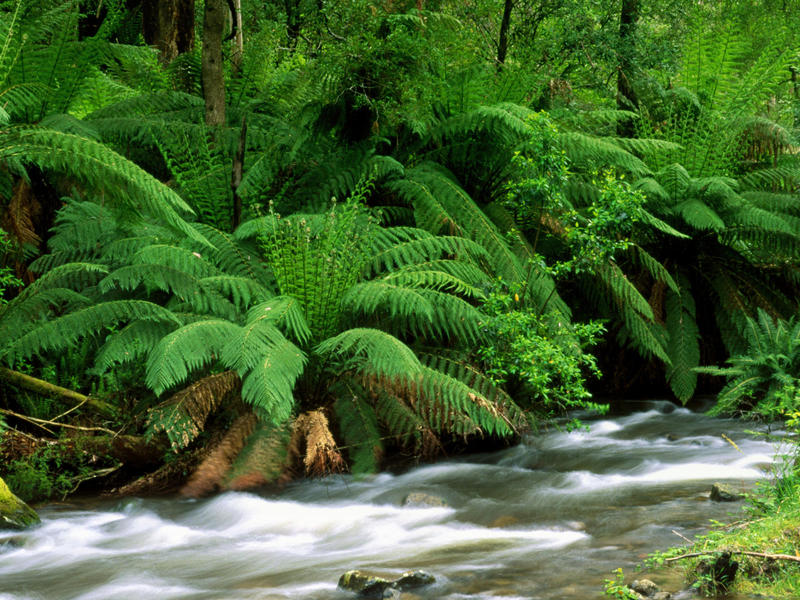
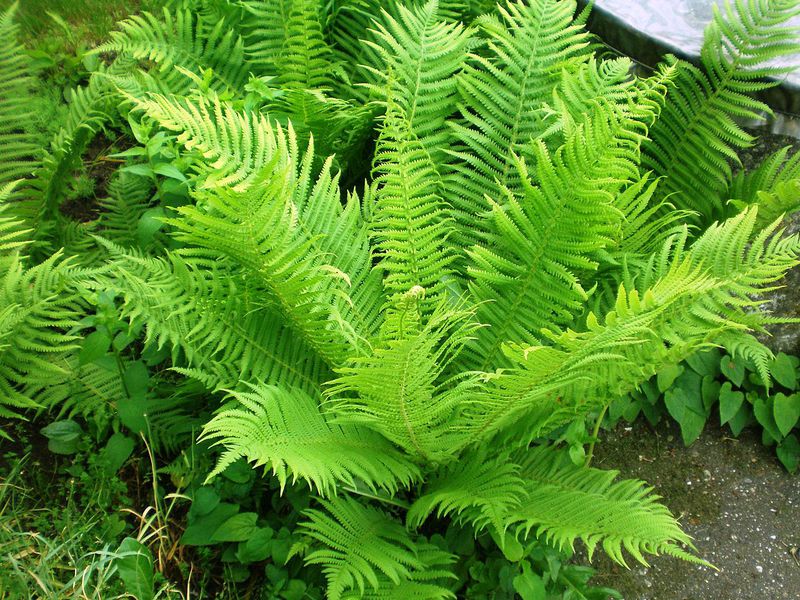
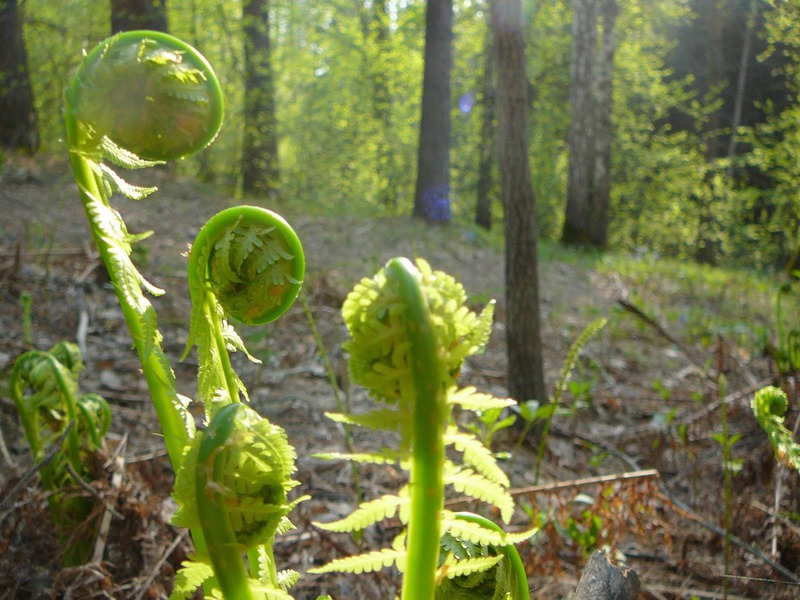

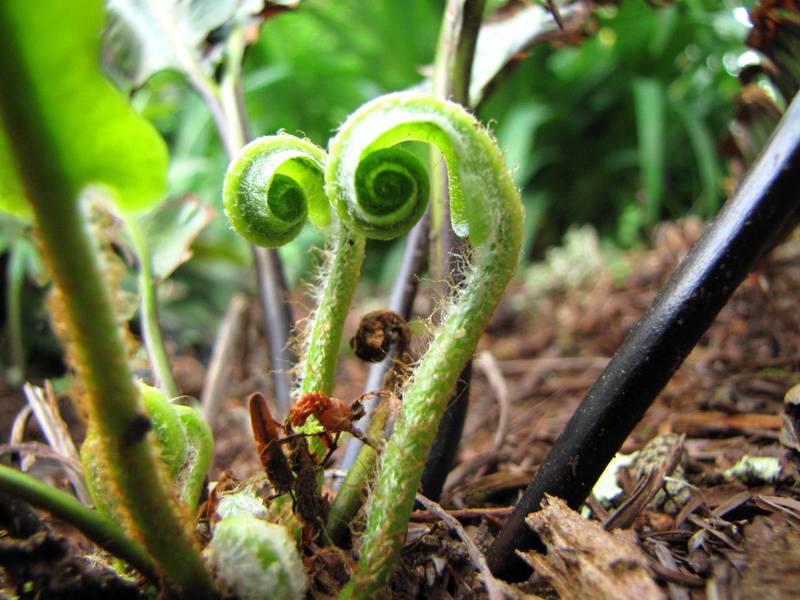
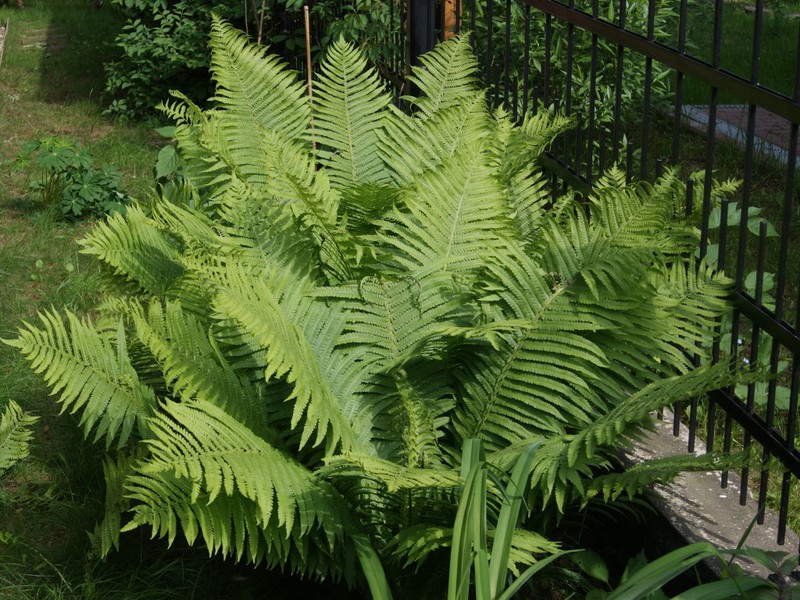
It is easy to distinguish the common bracken variety when it has fully grown and reached adulthood. After the initial shoot, the sprout is divided into three branches, on which in pairs feathery leaves open.
The top leaf of the fern is unpaired. A fully formed branch looks like an odd number of feather-shaped leaves that form a triangle... This is what distinguishes this species from other ferns.
On the lower part of the leaf of this plant, small nectaries form, which are very attractive to ants. What significance these nectaries have for the plant itself is still unknown to specialists.
Although the bracken is common and can reproduce by spores that form a border along the edges of the sheets, this type of fern prefers a vegetative waythrowing out new arrows from the root.
The common bracken fern has a reputation as an aggressive plant that grows, filling all possible areas. This is due to the fact that the root of this culture is deep enough in the ground so as not to be exposed to freezing in the cold seasons.
Drought is also not particularly scary to him. One of the main threats to forests, fires are not very dangerous for the common bracken, since it will re-grow from its root system in a fire.
Cooking applications
 In our country, bracken is eaten only by amateurs. They use young bracken shoots, cleaned of unblown leaves.
In our country, bracken is eaten only by amateurs. They use young bracken shoots, cleaned of unblown leaves.
The shoots are boiled, washed twice with water and used for cooking salads and soups or fried and served as a seasoning for main courses. Roasted shoots taste like mushrooms.
They cannot be eaten uncooked, since the young plant contains the enzyme thiaminase, which destroys vitamin B1.
Before cooking, shoots soaked in salt waterto rid them of harmful substances and give them a salty taste. The use of common bracken in cooking became known from Japanese cuisine. The food is used:
- sprouts of "rakhis";
- rhizomes.
Young shoots, which are no more than five days old, are torn off twenty centimeters high. This should be a shoot, before the first branch of the plant.
The Japanese are so fond of this common bracken fern that every year about three hundred tons of them are eaten in Tokyo alone.
The rhizomes of this plant in modern cooking do not have the same value as young shoots. But in some countries, in past centuries, dried roots were pounded and then used instead of flour for baking cakes.
Bitter wormwood: on the medicinal properties and contraindications to the use of this plant:https://flowers.bigbadmole.com/en/lekarstvennye-rasteniya/polyin-gorkaya-lechebnyie-svoystva-i-protivopokazaniya.html
Orlyak ordinary in folk medicine
The main use of this plant in folk medicine is as an anthelmintic. A decoction is made from the fern rhizome, which is taken to get rid of the parasites that live in the intestines. But even ancient doctors noted the positive effect of taking a decoction from young shoots:
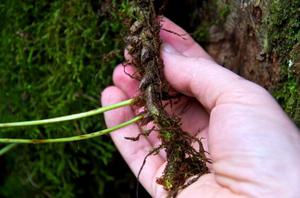 Relieve stress.
Relieve stress.- Normalization of metabolism.
- Improving performance.
- Growth process.
- Elimination of pain.
- Replenishment of the iodine balance.
- Removal of radionuclides.
- Elimination of the feverish state.
- Helps the body to form the skeleton correctly.
From the decoction of the roots, you can prepare a remedy that will help eliminate joint aches... It will also help stop diarrhea. When diagnosed with rickets, the broth can be taken to leave the disease forever.
For the manufacture of solutions and decoctions, it is better to turn to specialists in traditional medicine, so as not to harm yourself.
The common bracken fern can become a necessary plant both for the preparation of an exotic Japanese dish and for medical purposes. The main thing is to know how it looks, so as not to harm the body when collecting it.
